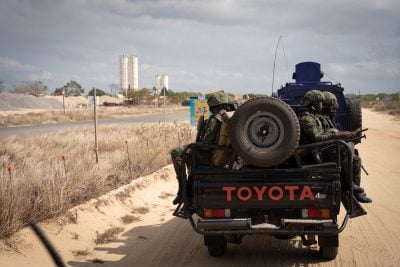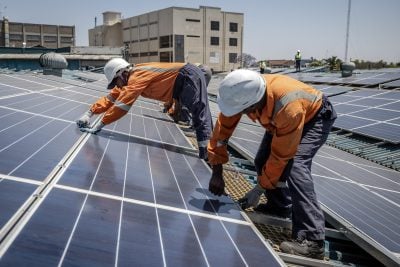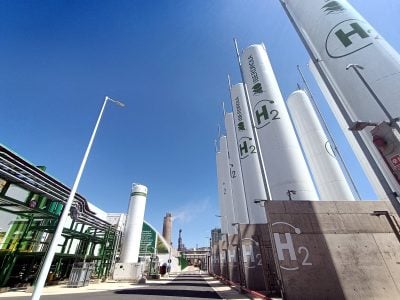North Africa has suffered as much as any major oil region from the combination of low oil prices and the industry disruption imposed by the Covid-19 pandemic. But upstream activity, notably in gas-rich acreage, is still taking place – if not at the steady clip of previous years.
Despite the lockdown, international oil companies (IOCs) have managed to continue exploration and production (E&P) efforts – a necessary undertaking given the typically high rates of decline registered at active Egyptian fields. The country is pursuing drilling plans in the offshore Mediterranean, where activity in recent years has been dominated by the Eni-led Zohr gas field, which is pumping at a rate of 2.7bn cubic feet/day.
From the beginning of 2020 until the end of August, the government signed nine agreements for oil and natural gas exploration in the Mediterranean and Western Desert areas with IOCs, with investment commitments worth $452.3m and 38 wells to be drilled.
In July, Eni announced an oil discovery in the South West Meleiha concession in the Western Desert. The Italian firm said its SWM-A-6X exploration well was drilled close to existing production facilities and was now connected to its production network.
In the West Mediterranean there are plans to shoot seismic – a method of geophysical prospecting in which elastic waves are produced in the earth by the firing of explosives – by the fourth quarter of 2020. Egyptian Natural Gas Holding Company (EGAS) is expecting a first exploration well in an area of six virgin blocks to be drilled in 2021.
An announcement was made in July that IOCs including BP, Chevron, Shell and Total would be awarded blocks in the area. Plans are also underway from Burullus Gas Company and Rashid Petroleum Company to drill development gas wells in the West Nile Delta area.
Drilling will be part of the West Delta Deep Marine project’s 10th phase, costing around $250m. London-based Neptune Energy is planning to commence drilling the first exploration well in the North West El-Amal (NWEA) concession towards the end of 2021, which is located in the central part of the Gulf of Suez. Drilling of a second and third well will depend on the results of the first.
Such efforts will add to ongoing attempts to build domestic Egyptian oil and gas production, which the government expects to enable it to revert to being a net exporter by 2022-23. In August 2020, the government said crude oil and condensate production would increase in 2020-21 by 11% to 34.65m tonnes.
However, the Egyptian industry has been hampered by the coronavirus, which has affected labour availability. In August, it was reported that an outbreak among workers hampered efforts to take the BP-led Raven gas field on stream.
In February, BP had reported that the development, located in the West Nile Delta, was experiencing significant delays and would not come fully online as anticipated. The development aims to tap into 5 trillion cubic feet of gas resources from two BP-operated offshore concession blocks.
Libya’s troubles continue
In neighbouring Libya, which is afflicted by a bitter internal conflict, efforts to develop upstream reserves have been patchy. The country has been wracked by a conflict between the UN-backed Government of National Accord (GNA) based in Tripoli and the Libyan National Army (NLA), led by Khalifa Haftar, which pledges allegiance to a rival government in Benghazi. The conflict has dogged the country’s onshore oil output for years and almost completely halted it in 2020.
In the country that holds Africa’s biggest proven oil reserves, crude production has only briefly risen back to the level of 1.5m barrels per day (b/d) recorded before the overthrow of the Gaddafi regime in 2011, although it was stable at over 1m b/d in 2018-19 according to OPEC figures. However, from January to September it was running at under 100,000 b/d due to a blockade on production imposed by the NLA. Although the NLA controls the majority of the country’s onshore facilities, it does not have access to the open market or direct access to the revenues, and has been pursuing a demand for a larger share.
Sharara, the country’s largest oil field, recommenced production in June after coming under the control of the GNA, but production was halted again in early September when a two-week quarantine was ordered following the death of a worker from Covid-19. The field produced some 300,000 b/d before the blockade, according to S&P Global Platts.
Libya’s offshore industry has emerged relatively unscathed from the conflict. Eni completed a project to increase capacity at the Bahr Essalam gas field to 1.1bn cubic feet in 2019, and offshore projects were responsible for most of crude output between January and September.
In mid-September, Haftar announced that the LNA was ready to re-open Libya’s oil fields for a month, following an agreement with the Tripoli government on a “fairer share” of oil revenues. The GNA confirmed the agreement and said that a committee had been set up to deterimine revenue sharing.
The country’s National Oil Corporation (NOC), which is responsible for operating most of the country’s oil sector, in turn allowed production to recommence in fields not controlled by mercenaries and resumed exports from safe ports. By early October production had climbed back to 300,000 b/d.
Production plummets in Algeria
Algeria has experienced struggles of its own in 2020. The country’s crude and condensate output combined in the first half of 2020 came in at 1.38m b/d – the lowest level in 17 years. In Salah gas production fell to just 200m cubic feet/d in Q2 of 2020, down by almost 75% on the previous quarter.
State-owned energy company Sonatrach has signed upstream memorandums of understanding with a range of IOCs, including ExxonMobil, Chevron, Eni, Lukoil, OMV and Cepsa, but many of these are vague plans to identify potential upstream opportunities for joint investment and firm deals look a long way off.
The government took an axe to Sonatrach’s budgets this year as oil and gas revenues declined. In early 2020, President Abdelmadjid Tebboune confirmed a budget cut of 30%, forcing Sonatrach to reduce by half its planned expenditure for 2020, inevitably impacting its upstream ambitions for some time, as will continued price stagnation.
Want to continue reading? Subscribe today.
You've read all your free articles for this month! Subscribe now to enjoy full access to our content.
Digital Monthly
£8.00 / month
Receive full unlimited access to our articles, opinions, podcasts and more.
Digital Yearly
£70.00 / year
Our best value offer - save £26 and gain access to all of our digital content for an entire year!
 Sign in with Google
Sign in with Google 



